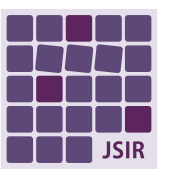- PEER REVIEW PROCESS
- CONFIDENTIAL COMMENTS TO THE ASSOCIATE EDITOR
- COMMENTS TO THE AUTHOR
- ETHICAL RESPONSIBILITIES OF REVIEWERS
Interventional Radiology is a peer-reviewed, open access journal that publishes original research articles, review articles, technical notes, case reports, and pictorial reviews in all fields of Interventional Radiology including vascular and non-vascular interventional radiology, and interventional oncology. Interventional Radiology operates a double-anonymized peer-review process and articles accepted for publication in Interventional Radiology should be of the highest quality and interest to the field. The role of the reviewer is a very important one for Interventional Radiology. The quality of the Journal depends on thorough, constructive critiques from its reviewers.
PEER REVIEW PROCESS
The reviewer serves two major functions. The first function is to judge whether the manuscript merits publication by providing a rating, which is “Accept,” “Minor Revision,” “Major Revision,” “Reject.” The second role is to provide constructive criticisms for the authors. The editor appreciates the time and effort you expend on behalf of our Journal “Interventional Radiology”. Reviewers must immediately alert the journal editor of any real or potential competing interest that could affect the impartiality of their review and decline to review where appropriate, conducting themselves fairly and impartially. Before writing the review, you should take note of the following: 1) To which manuscript category does this manuscript best conform? 2) Are there any potential biases in reviewing this manuscript? 3) Does the manuscript address an important problem? 4) Has the manuscript been previously published? Please remember that the manuscript and your review are confidential; do not duplicate or distribute the information.
Recommendations
- Please rate this manuscript into one of the categories indicated and provide your recommendation for its disposition.
- Accept – if the paper is suitable for publication in its current form.
- Minor revision – if the paper will be ready for publication after light revisions. Please list the revisions you would recommend the author makes.
- Major revision – if the paper would benefit from substantial changes such as expanded data analysis, widening of the literature review, or rewriting sections of the text.
- Reject – if the paper is not suitable for publication with this journal or if the revisions that would need to be undertaken are too fundamental for the submission to continue being considered in its current form.
CONFIDENTIAL COMMENTS TO THE ASSOCIATE EDITOR
Please provide specific recommendations regarding the paper’s suitability for publication. This judgment should be based on the importance of the problem/topic, originality, thoroughness of scientific methodology and data analysis, and logical interpretation of the findings. Case reports must have a unique element that warrants publication. Please offer any suggestions for improvement in the content, writing, or presentation of the material. Please note any potential conflict of interest relevant to the subject matter/materials in this manuscript.
COMMENTS TO THE AUTHOR
Please explain your evaluation of the manuscript. The reviewer should provide a short paragraph that summarizes the strengths and weaknesses of the manuscript. Do not state the actual Recommendation (e.g., recommended to Accept, Minor Revision, Major Revision, Reject & Resubmit, or Reject) in the body of the review. Please indicate its acceptability for publication separately in the drop-down list. You should, however, make sure that the tone of your review fits your final recommendation. If you need to comment specifically on the decision, please use the section entitled “Confidential Comments to the Associate Editor.”
To help the author improve the paper, please offer constructive suggestions. The following checklist may be useful:
Title:
- Does the title accurately convey the message of the paper?
- Does the title truly reflect purpose and findings of study?
Abstract:
- Is it arranged in sections appropriate for the topic (e.g., purpose, methods, results, conclusions; or purpose, case report, conclusions)?
- Is it a concise and faithful summary of information in the text?
- Are there discrepancies between the Abstract and the remainder of the manuscript?
- If the abstract was published by itself, would the reader still understand the crux of the manuscript
Introduction:
- Is the Introduction concise?
- Does it establish the purpose and goals of the article or study?
- Is the purpose of the study clearly defined?
- Does the introduction succinctly lay the groundwork for what was done and why it was worth doing?
- Do the authors provide a rationale for performing the study based on a review of the medical literature?
- Do the authors show that an important problem or question exists?
- Do the authors show that prior published work has failed to adequately address the problem?
- Are any unusual terms used for the study introduced?
- If this manuscript is Original Research, is there a well-defined hypothesis?
Methods:
- Is this a thorough presentation of methodology with adequate description of the sample population/experimental model, complete explanation of technique(s)/procedure(s), and identification of data analysis methods?
- Could another investigator reproduce the study using the methods as outlined or are the methods unclear?
- Do the authors justify any choices available to them in their study design?
- If the authors have stated a hypothesis, have they designed methods that could reasonably allow their hypothesis to be tested?
- Is an outline of statistical methods provided, if appropriate?
- For Case Reports, are descriptions of the patient history, pathology, procedures, and outcome complete?
Results:
- Does this section reflect a logical presentation of the outcome?
- Is the research clearly explained?
- Does the order of presentation of the results parallel the order of presentation of the methods?
- Are the results congruent with the methods, or are some results presented “out of the blue” without having first been introduced in the “Materials and Methods” section?
- Are the results believable?
- Are the results reasonable and expected, or are they unexpected?
- Are the findings new?
- Do the results advance the science and/or clinical practice of interventional radiology?
Discussion:
- Is the discussion a succinct, valid interpretation of outcome data substantiated by literature review, experience, etc.?
- Do the authors comment as to whether the results are in line with prior studies? If the results are not in line with prior studies, an attempt should be made to explain the discrepancies.
- Are the authors’ arguments sound and conclusions justified by the results found in the study?
- If a hypothesis was proposed, do the authors state whether it was verified or falsified? Alternatively, if no hypothesis was proposed, do the authors state whether their research question was answered?
- If there are unexpected results, do the authors adequately account for them?
- Is there a paragraph that acknowledges study limitations? Are there additional limitations that should be noted?
- Does the conclusion of the article give a clear “take-home message”?
References:
- Does the reference list follow the format for the journal?
- Are the references current and adequate to support the paper’s arguments?
- Are there too many or too few references? (limit of 50 for original research, 10 for case reports and technical notes)
- Does the reference list contain errors?
- Have the authors misquoted the references?
- Are there more references than are necessary?
Illustrations:
- Are these of good quality and useful to the paper?
- Are any superfluous or not worthy of publication?
- Would a different figure better illustrate the findings?
- Do the findings and graphs adequately show the important results?
- Are the legends clear and concise?
- Are the figure legends easy to understand without referring to the remainder of the manuscript
Tables:
- Is each table important to the paper, well organized, and easy to read?
- Do the tables appropriately describe the results?
- Do any need to be eliminated?
- Should one or more tables be added?
- Can the information be incorporated into the text?
ETHICAL RESPONSIBILITIES OF REVIEWERS
Timeliness
Please remember that the deadline to submit your review comments is 2 weeks from the day you agreed to review. If it is not possible to meet the deadline, please contact the editorial office immediately so that we can decide whether to extend the deadline or assign an alternate reviewer.
Conflict of Interest for Reviewers
Any potential conflicts of interest on your part must be brought to the attention of the editor before you begin the review process. If you are involved, in present or in the past, in any part of the research presented in the manuscripts, including but not limited to, financial interests, belonging to the same institution as any of the author(s), collaborating with the authors, other relationships or connections, both professional or personal, with any of the authors, companies, or institutions related to the manuscript, which might prevent you from providing a fair and unbiased review, you should decline the role of reviewer and inform the editor so that another individual can be invited to review the manuscript.
Confidentiality
- The review process will remain strictly confidential.
- Do not discuss or mention, in any way or to anyone, the contents of the paper before or after the review process.
- The manuscript submitted for peer-review is a privileged document. All materials must be treated in confidence. If additional advice from a colleague or any parties is thought to be helpful, please contact the editorial office in advance to obtain permission from the editor. Do not pass the manuscript on to your colleagues or other third parties without first obtaining consent from the editor.
- Before publication, the research described in the paper cannot be referred to in the reviewer’s own work. You must refrain from citing or referring to the work before it has been published.
- Do not retain any copies of reviewed manuscripts and do not use the knowledge of their content or take scientific, financial, personal, or other advantage of material available to you through the peer review process.
- Do not upload the manuscript to software or any AI-assisted tools or technologies.
Constructive comments
Provide objective and constructive feedback in your review to encourage the author to improve the paper and their writing. When you find negative aspects, suggest concrete means for improvement. Refrain from being hostile or inflammatory and from making derogatory personal comments.
Impartiality
Reviewer comments should be based on an impartial consideration of the facts, exclusive of personal or professional bias. All comments should be based solely on the paper’s scientific merit, originality, and quality of writing as well as on the relevance to the Journal’s scope and mission, without regard to race, ethnic origin, sex, religion, or citizenship of the authors. If you determine that you have a bias during the review of the paper, please contact the editor immediately.
Competence
You should accept an assignment only if you have adequate expertise to provide an authoritative assessment. If you think certain aspects of a manuscript are outside your expertise or realize that your expertise is limited, you should contact the editorial office so that we can decide whether you should continue and address your areas of expertise only or whether to assign an alternate reviewer(s).
Manuscripts You Have Previously Handled
If you are invited to assess a manuscript you previously reviewed for another journal, please consider the manuscript as a new submission. In such case, the authors may have made changes according to the previous review comments, and the Journal’s criteria for evaluation may differ from those of the other journal.
Ethical Policies
Please note any suspicious evidence of the ethical misconducts and bring it to the attention of the editor immediately. Please see our general publication ethics policies here.
Use of Artificial Intelligence (AI)-Assisted Tools/Technologies Reviewers are prohibited from uploading the manuscript to software or AI-assisted tools/technologies where the confidentiality is not assured. It is required to disclose to the journal if any AI-assisted tools or technologies are used to facilitate the review.
[Print version] Information for Reviewers




